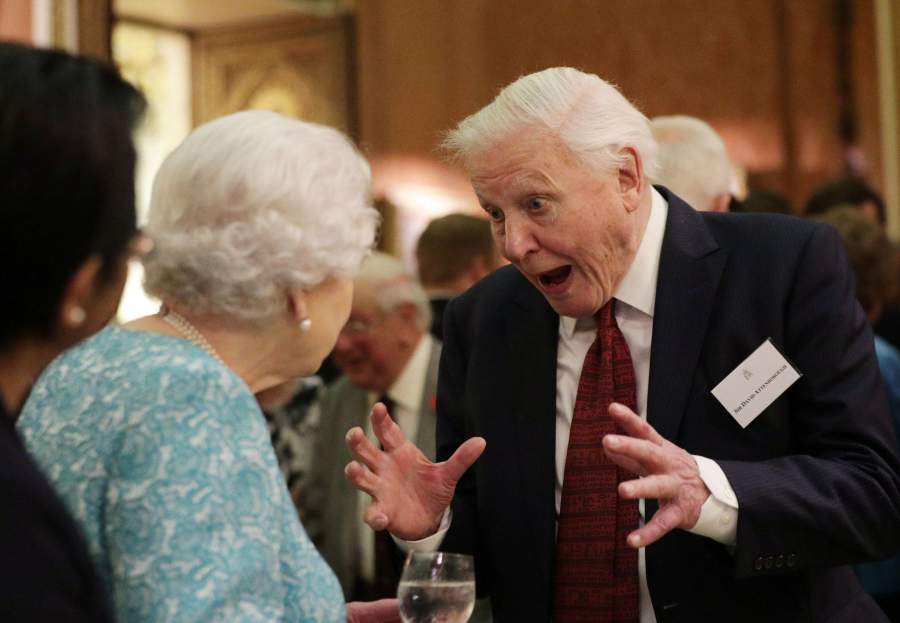92!
Not only is the photography on his shows amazing, the lecture along with them is not dumbed-down very much – a grown-up can find things to appreciate in it. He’s also unafraid to take on nature as “red in tooth and claw” – unfortunate things happen; that’s life. I think it’s important to leave that in, too, and not edit our reality too much.
My favorite Attenborough moment has to be the one where he is on the giant cone of bat poop and cockroaches. What an amazing character!

Here, he observes queen Elizabeth, “the life-cycle of this creature is … extraordinary. Unlike a termite queen or an ant queen, the queen of England manages her hive using intermediaries known as members of parliament. It is a beautifully complex relationship…”
Fortunately, there hasn’t been the slightest inkling of skeletons poking out of Attenborough’s closet.

No skeletons, perhaps, but a soggy ape might be squelching around.
Owlmirror@#1:
Are you referring to the “aquatic ape” thing? That was truly unexpected.
That is a stupendous photo. (Even if it’s a screen-grab.)
Sir Richard is waxing enthusiasm and Queen Liz is leaning in.
chigau@#3:
Yes; it’s something I found on the internet a while back and I forget where it came from – my clippings folder is not well-organized.
Chigau, #3
I think you mean Sir David. Sir Richard was his brother – the famous actor and director.
The thing about David Attenborough (who, along with Stephen Fry and Mary Beard will one day become a member of our benevolent ruling triumvirate and set everything right), is that he’s not just a naturalist – he’s also a pioneer of televisual documentary-making. He was actually the controller of BBC2 back in the 60s, when colour television first arrived, and as a commissioner and producer he created the long-form “landmark” documentary series format. Kenneth Clark’s Civilisation (which just this year got a more culturally aware sequel in ‘Civilisations’) and Jacob Bronowski’s Ascent of Man were his doing, and when he stepped down as head of the channel he began making his own wildlife programmes on the same 13 x 1 hour format (traditionally British documentaries were one-offs before that, or at most done in series of 6 as is usual with British TV programmes). Carl Sagan took his inspiration for Cosmos from those British series of the 60s and 70s.
It’s not even just that – he basically invented the entire concept of BBC2, and so is also responsible for things like Monty Python’s Flying Circus.
The man is a god-damn national treasure. We need to clone him urgently.
cartomancer@#5:
he’s also a pioneer of televisual documentary-making
He also caused the state of the art of cameras for nature photography to be pushed many leaps in the right direction. He’s not a camera technology geek, per se, but he was notable for asking the photographers “can you make it like this…?” and they delivered. Consequently there are macro video lenses with very deep focal planes, tremendous light-gathering optics for night time or low light, and broadcast-quality endoscopic cameras. His amazing work on nature shows also included many cases of taking the first good photographs of previously un-photographed creatures.
Life On Air is an excellent documentary about Attenborough himself, and it’s got some really charming moments.